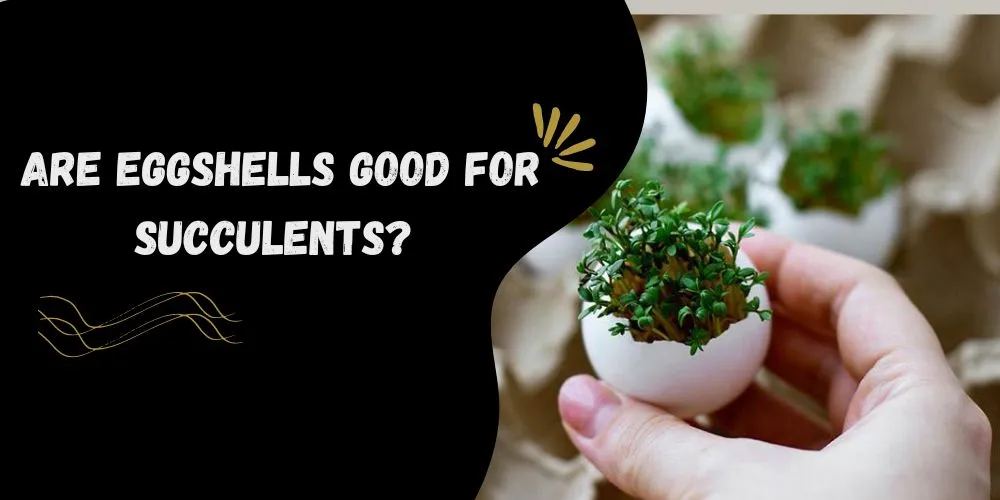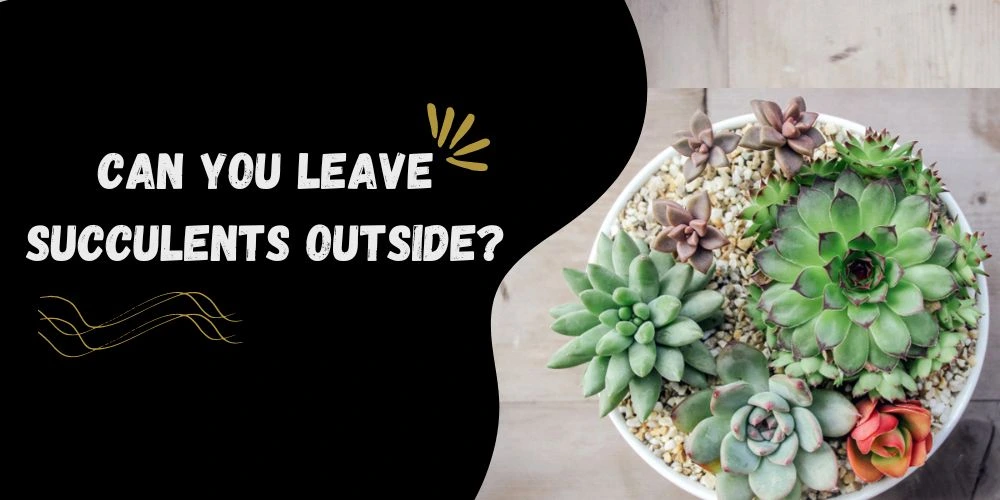As we yonder our way into the latter half of the year, the presence of the cold winter slowly creeps in, and that may not be perfect for all your beloved succulents.
There are typically two different types of succulent plants. Namely, Hardy Succulents, the ones that thrive under extreme conditions, and Soft Succulents, their anti-frost counterparts. In this article, we’ll be discussing the latter.
If your succulent has been left to the mercy of the harsh, cold winter weather, it is most likely that it has taken frost damage.
So can you revive a frozen succulent if it’s frost-bitten? I will answer it right here because it’s something that you should definitely know.
To answer it simply, yes. Succulents, one of the most easy-to-grow plants, require minimal attention and little attention from their potters. It is important to know whether you can revive your Frost-bitten Succulent or are you rooting for a dead cause.
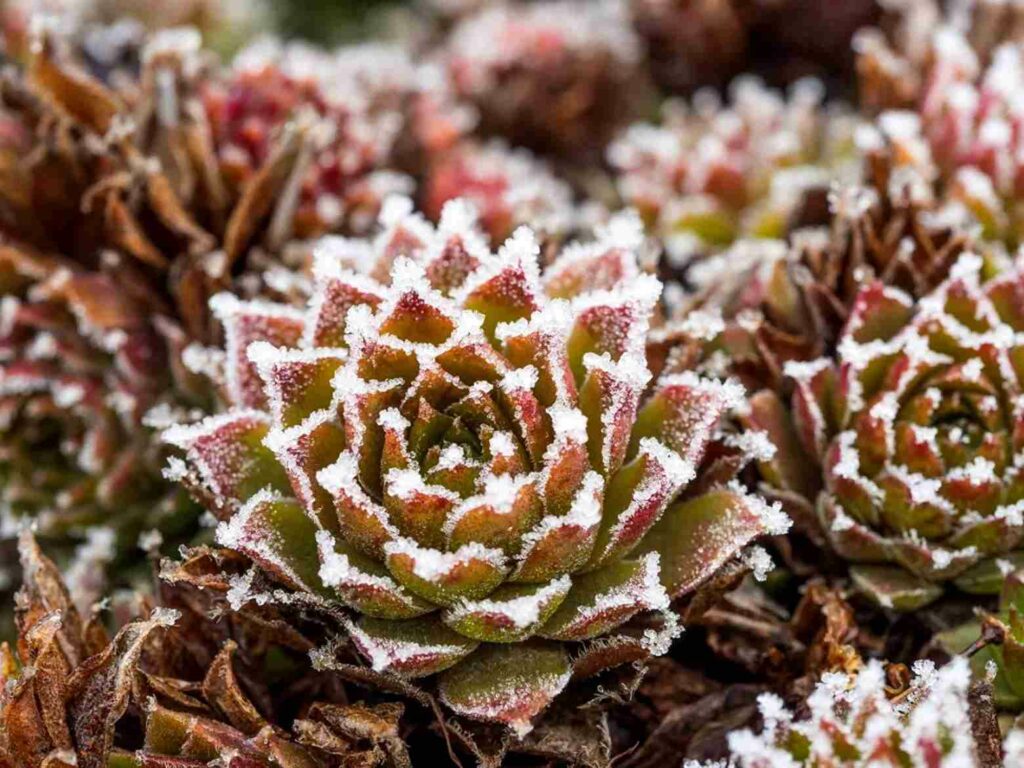
When is a Succulent Most Likely to Freeze?
The temperature tolerance depends upon the softness or hardness of a succulent. Soft plants can comfortably survive any temperature above 32 degrees F. However, they prefer 40 degrees or more. Succulents are not immunized to survive a climate below freezing temperature.
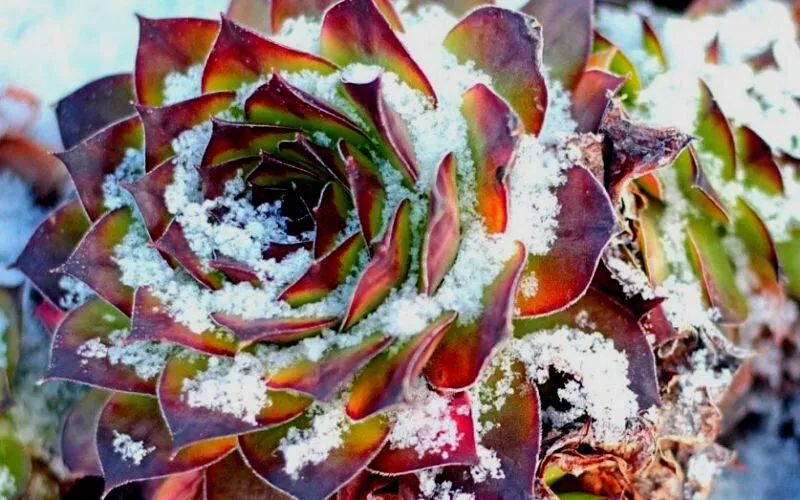
Their thick, plump leaves, which retain water, will eventually freeze and kill the plant. Frost-resistant succulents can endure temperatures as low as -20°F. Considering their ability to resist temperatures below zero, they prefer dry soil.
Typically when you notice that your succulent has developed some frost on it, the first thing you should do is take it indoors and give it only a few hours of sunlight if necessary. Then, once you’ve established a warmer environment to keep it in, make sure that your succulent is anted in well-draining soil with a drainage hole in the pot.
Can You Revive A Frozen Succulent?
Yes, you surely can revive a frozen succulent at home on your own. You just need to be a little bit of careful to get rid of the damage portions by removing the spongy tissues, and you’re good to go.
If you feel your plant baby is freezing, please inspect the damage and try fixing it for a few weeks. The frozen plant should be used if there is even a trace of new growth.
To help injured plants recover, use a sharp knife dipped in denatured alcohol to cut away the damaged portions and remove tissues that appear spongy or brown. Place container plants in a dry spot away from the sun’s rays and begin usual plant care once the wounds have cured.
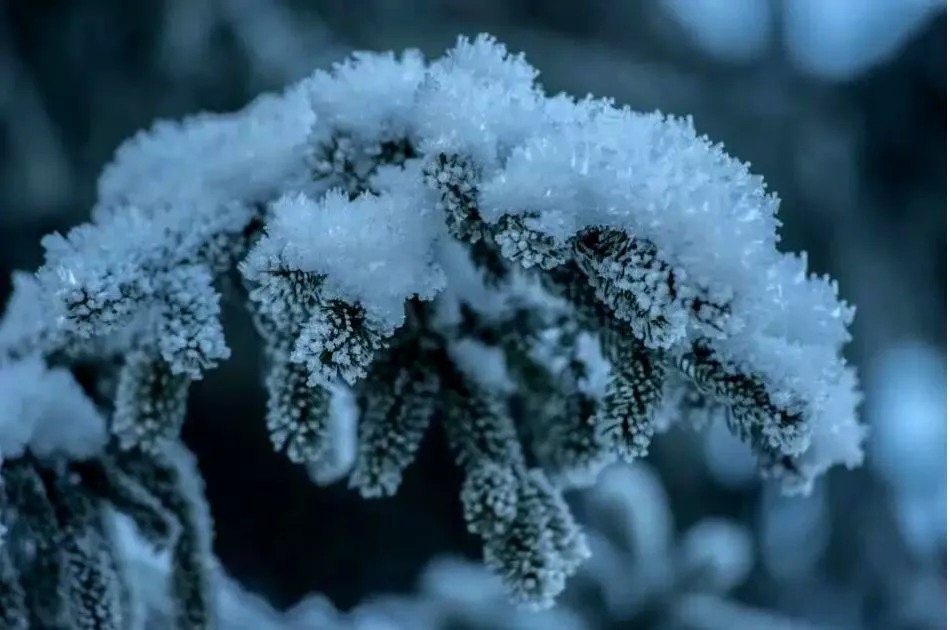
Based on the extent of damage your succulent takes due to the winter weather, the revival of your plant is governed by namely two principles :
- How long do temperatures stay below freezing, and,
- How long was the plant exposed to the frost?
If your plant has been out in cold weather for a long period and is covered with frosting, the chances of surviving are close to none. But, on the other hand, if your succulent has sustained only minimal amounts of frost damage to a small part of it, it can be revived with a little effort.
Things to Look Out For When Reviving a Frozen Succulent
The first and foremost step to take when reviving a succulent exposed to the harsh winter is to give it time to heal. Only after closely examining it for roughly 2 weeks can one properly assess the damage done. Based on the extent of said damage, we can come to a definitive answer on the revival of the succulent.
How do you know that your plant has taken frostbite? If you look at your succulent and find that its leaves have Frozen and that it has started to go brown (almost as if it’s rotting), you can safely assume that your succulent has been affected by the weather and has started to wither away.
What does it look like?
Frost damage is typical in frigid, cold weather. It usually occurs when ice crystals accumulate in their tissue and cause damage to their cells. When this happens, you’ll notice certain indicators of frostbite, such as drooping leaves on your plants. The wilting growth will eventually turn brown or black and get crispy. Simply put, the plants will die soon.
Remove any mushy or collapsed leaves from your plant due to the cold. Change the lighting for the plant and remove the worst burnt leaves if there are any. Saving dying succulents is typically quite easy. After they go through a major freeze that causes their weakness, give them good care.
If all everything fails, save a healthy leaf or stem fragment, let it wilt, and then plant it in succulent soil. This will give birth to the succulent anew.
Reviving a Frost-bitten Succulent. How To Do It?
As we’ve stated earlier, the easiest plants to grow are succulents. They don’t need extra care, making them ideal for novice gardeners. However, issues may occasionally develop.
Therefore an essential component of caring for succulents is understanding how to resuscitate ones that have been ignored. Depending on the cause of the succulents’ illness (here, cold damage), the best way to revive them will vary.
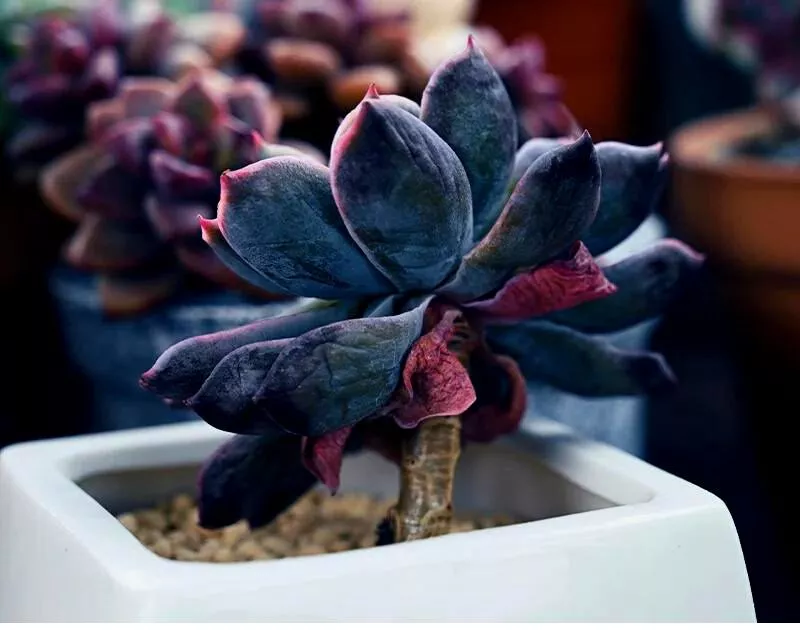
Succulents may have a difficult winter. At best, they appear boring; at worst, they perish. But with a few easy care tips, you can ensure that your succulents arrive at springtime looking strong, healthy, and brilliant.
- Prepare and Keep Your Succulents Indoors: Depending on your type of succulent, it is best to take your Succulents Indoors during cold winters. Here, they get the care they need and get to stay away from the freezing temperatures outside, allowing them to grow. If your succulents are of the Hardy and more resistant variety, they’re okay being outside through the winter. If their softer counterparts are to be properly cleared of any diseases through chemicals and pesticides and then planted indoors, as mentioned above.
- Removal of Damaged Parts: Secondly, if you notice that parts of your succulent have severe frost damage, you’re to have them cut off with a disinfected knife. To disinfect your knife, you’ve just gotta make sure to sharpen it and use a paper towel to clean it after every cut.
- Once the cactus portions have turned black, assume they are decaying and lifeless. If you don’t get rid of them, the cactus will perish, and the deterioration will spread. If everything goes as planned, The clipped part will begin to produce new growth in a few months.
- Apply a frost cloth: Applying such materials prevents frost particles from forming over your succulent.
- Use glass Couches to avoid moisture from frosting over its leaves.
- Finally, changing your watering schedule is also very important based on the climate and the region you’re living in. This way, your plant gets the moisture it needs without freezing its soil.
Frequently Asked Questions (fAQs)
How do you tell if plants are dead after freezing?
If your plant doesn’t show any signs of growth or healing within 2 or more weeks of its freezing, then it’s safe to assume it is dead.
Can cactus revive from freezing? How to revive a frozen Christmas cactus?
It is possible to revive a frozen cactus.
If you wish to revive your frozen Christmas cactus, watch the softened regions until they turn black. Avoid taking action when you notice the tips or trunks of your cactus changing from green to white to purple. The cactus has a good chance of self-healing.
You will need to cut those tips when they change from green to white to black. In the later spring months, wait until a sunny day to confirm that the chilly weather has subsided. Next, cut out the black portions; voila, you’re done!
How to save a frozen jade plant?
If you’ve noticed that your jade plant has frozen, use pruning shears or a sharp knife to remove branches or leaves from the tree. Bring the frozen jade plant indoors to help them thaw up rapidly. The plant will then be able to gradually return to a safe temperature and avoid further harm by sitting in a warm but not hot environment.
Conclusion
To summarize, planting succulents is very easy. Though they may be self-sustainable and need less attention, they must be taken care of from time to time.
Despite being tough plants, they are susceptible to the extreme cold of winter and can either go away if left out too long. Facing the same difficulty? Follow whatever we’ve mentioned above religiously and watch as your Succulents grow up healthy and fast.

